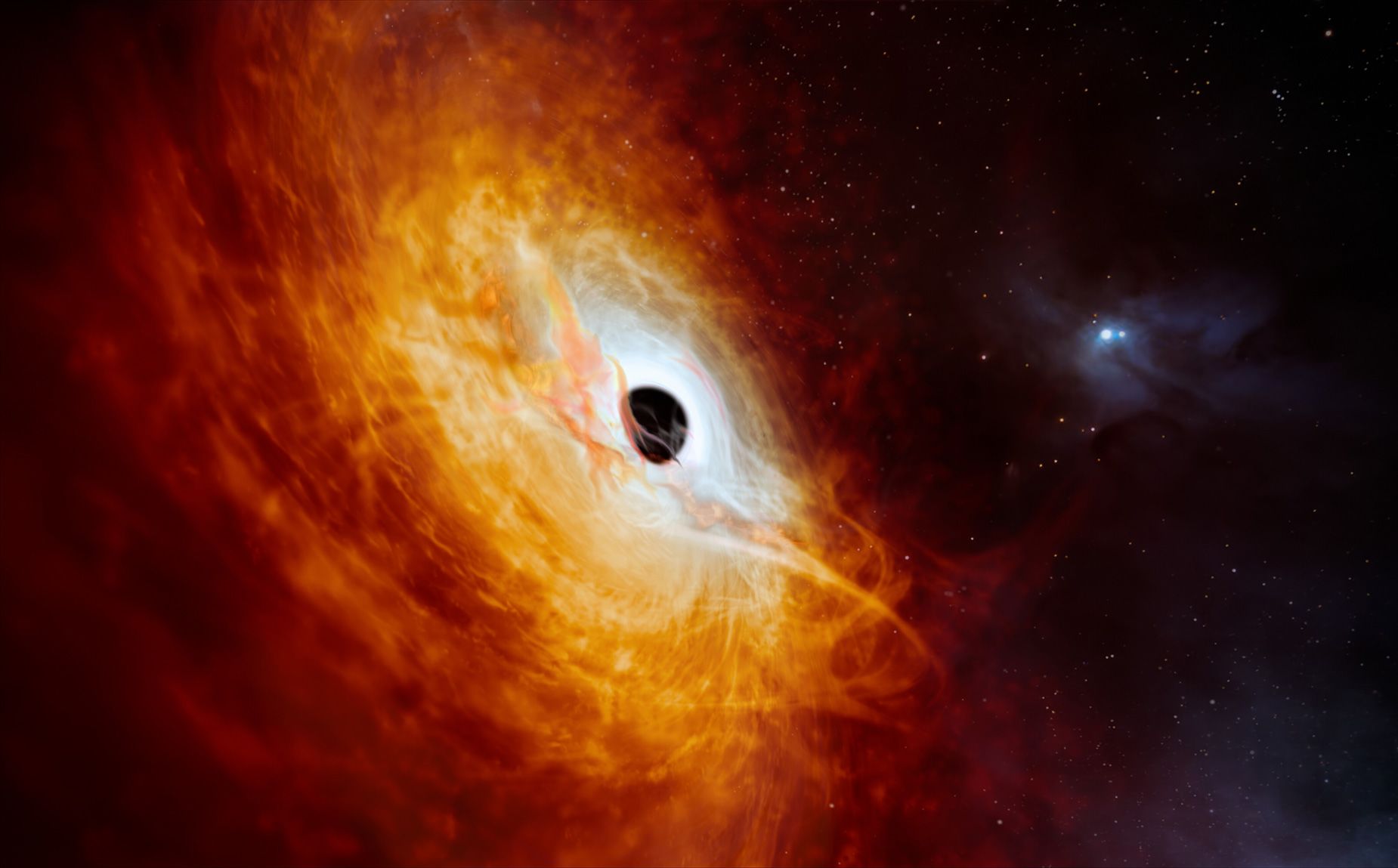
Post By : 26/06/2024
Black Hole
- Definition: Black holes are regions in space where gravity is so strong that nothing, not even light, can escape from them. They are formed when massive stars collapse under their own gravity at the end of their life cycles. Characteristics:
- *Singularity: At the center of a black hole lies a gravitational singularity, where matter is crushed to infinite density and space-time curvature becomes infinitely steep.
- *Event Horizon: The boundary surrounding the singularity is called the event horizon. Once an object crosses the event horizon, it cannot escape the gravitational pull of the black hole.
- *No Hair Theorem: Black holes are described by the "no hair" theorem, which suggests that they are characterized only by three properties: mass, electric charge, and angular momentum.
- *Types: There are different types of black holes, including stellar black holes (formed from the collapse of massive stars), supermassive black holes (found at the centers of galaxies), and intermediate-mass black holes.
- *Indirect Methods: Black holes are detected through their gravitational effects on nearby objects, such as stars and gas clouds. Observations of these objects' movements can provide evidence for the presence of a black hole.
- *Direct Imaging: Advanced telescopes and instruments can capture images of material falling into black holes, emitting X-rays and other forms of radiation.
- *Stellar Collapse: Stellar black holes are formed when massive stars exhaust their nuclear fuel and undergo gravitational collapse. The core collapses inward, creating a black hole.
- *Galactic Evolution: Supermassive black holes are thought to form through processes involving the coalescence of smaller black holes, as well as the accretion of surrounding matter over cosmic time scales.
- *Astrophysical Phenomena: Black holes play a crucial role in shaping the universe's structure and evolution. They influence the dynamics of galaxies, the formation of stars, and the behavior of matter in extreme environments.
- *Gravitational Waves: Black hole mergers can produce ripples in space-time known as gravitational waves, which were detected for the first time in 2015 by the Laser Interferometer Gravitational-Wave Observatory (LIGO).
- *Ongoing Studies: Scientists continue to study black holes to unravel their mysteries and understand their fundamental properties. Research efforts involve theoretical modeling, computer simulations, and observations using ground-based and space-based telescopes.
- *Future Missions: Planned missions, such as the Event Horizon Telescope (EHT) and the Laser Interferometer Space Antenna (LISA), aim to capture higher-resolution images of black holes and study their gravitational interactions in greater detail.
- *Popular Culture: Black holes have captured the public's imagination and are frequently depicted in science fiction, literature, and media. They symbolize the unknown and inspire curiosity about the nature of the universe.
Detection:
Formation:
Implications:
Research and Exploration:
Fascination and Inspiration:
